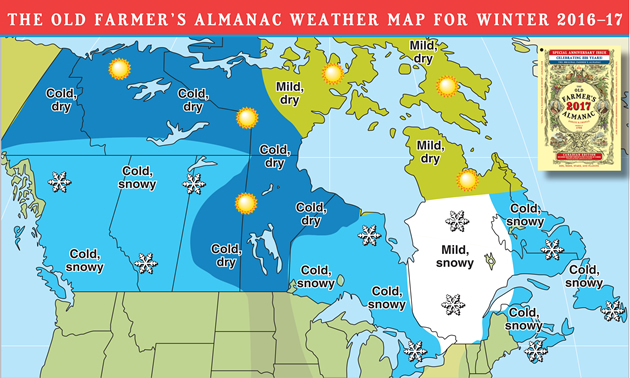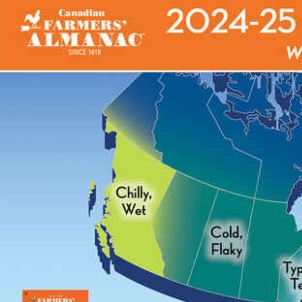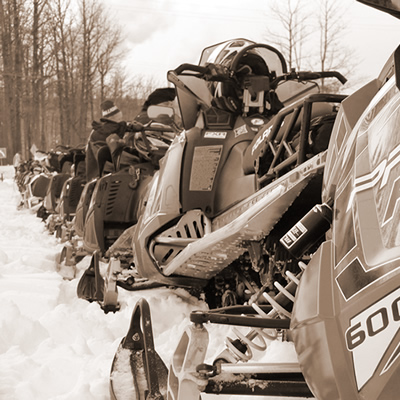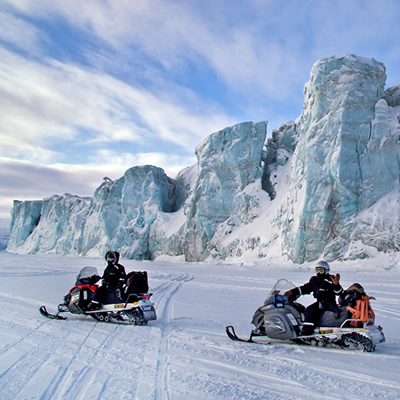Editor's Note: For an updated version of this article, see our Weather Predictions for the 2017-2018 Snowmobiling Season in Western Canada.
This might have been the year you finally decided to snowcheck a new sled. Good timing—especially if you live in B.C., Alberta and the light blue parts of Saskatchewan (see map).
The Canadian edition of the Old Farmer’s Almanac is out, and here is the general outlook:
“This winter, brace for more snow and colder-than-average temperatures throughout most parts of the country. The exceptions to the winter of white will be Manitoba, portions of Saskatchewan, and northern sections across the land. While snowfall will generally be below normal in these areas, temperatures will remain chilly.”
So even if you do live in “the exceptions,” the snow that does fall in these areas should stick around longer than it did last winter. The Almanac predicts January and February will be the coldest and generally snowiest months on the Prairies, whereas Southern B.C. (from Cranbrook to Prince George) will see the snowiest periods occur in early and mid-December and mid-January. January and February will be the coldest months in Southern B.C., as well.
So what’s behind the return of Old Man Winter? Well, forecasters are claiming the strong and warm El Niño that cancelled many snowmobile rallies and stunted sled sales last winter has left the building and is being replaced by La Niña. The opposite of El Niño, La Niña is associated with cooler than average ocean temperatures. According to The Weather Network, “it usually means a colder winter for the western half of Canada and typically wetter conditions on the West Coast.”
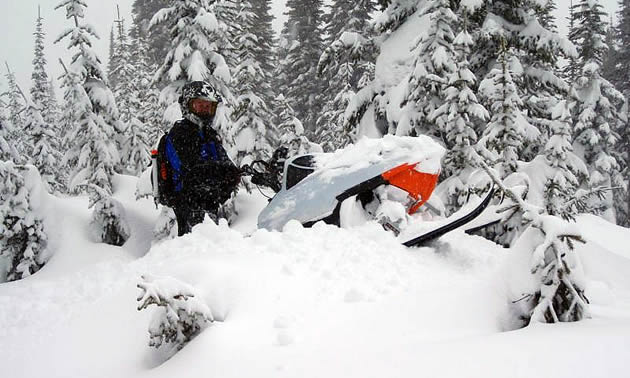
Other long-range forecasts are calling for a strong La Niña this winter, but the Old Farmer’s Almanac predicts that it will be moderate.
OK, I know what you are thinking because I’m thinking it too. Wasn’t the Old Farmer’s Almanac inaccurate in its prediction for last winter? Well, yes and no. The Almanac did say that snow levels were going to be below normal nearly everywhere, but it also predicted colder than normal temperatures for Saskatchewan and Manitoba. I believe the term Big Chill was even used.
Apparently, the discrepancy occurred because the editors of the Almanac expected a mild or neutral El Niño instead of the strong El Niño that did occur.
Accounting for the error, they write, “Since we did not expect a strong El Niño to occur, temperatures in the 2015-2016 winter were warmer than we forecast nearly everywhere.”
I guess everyone is allowed to make mistakes now and then, but the bigger picture is that each long-term forecast needs to be taken with a grain (or block) of salt. That being said, we here at SnoRiders pray that the 2016-2017 sledding season will see an extra white winter blanket all of Western Canada.
To read more about last winter’s prediction, see our story Weather Predictions for the 2015-2016 snowmobiling season.
